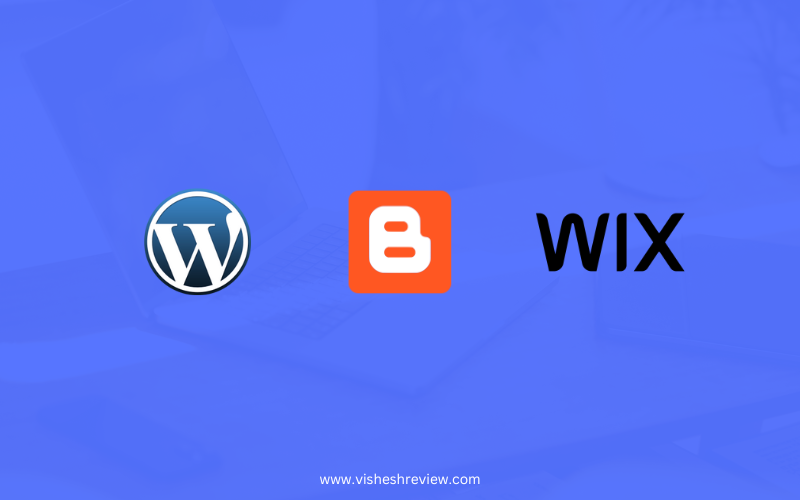Starting a blog is like opening the door to a world of limitless possibilities. It’s a creative outlet where your passion meets purpose, and if done correctly, it can even be a lucrative source of revenue. Whether you’re writing about travel, food, fashion, technology, or any other topic that interests you, blogging allows you to connect with like-minded individuals, establish a dedicated audience, and make a significant difference. But it’s more than just writing; it’s about creating a digital arena in which your ideas may resonate and thrive. Starting a blog is an exhilarating blend of creativity, strategy, and entrepreneurial energy, from content brainstorming to mastering the art of online presence. Are you ready to transform your passion into a viable online business? this guide will help you through the process of starting a blog that not only draws readers but also generates passive income.
Step 1: Choose Your Blog Niche
Your niche shapes the focus of your blog and defines your target audience. Choosing the right niche is key, and here’s how to get started:
- Passion and Expertise: Pick a topic you genuinely enjoy and know well—whether it’s fitness, personal finance, food, travel, or technology. Writing about what you love makes the process more rewarding and sustainable.
- Market Demand: Look into popular topics that have a large, engaged audience. Tools like Google Trends or Ubersuggest can help you see what’s trending and how much interest exists.
- Monetization Potential: Make sure that your blog category offers ways to make a passive income, such as affiliate marketing, sponsored posts, or selling your own products.
Always choose a blog category that combines your passion with market demand. For example, “healthy meal planning for busy professionals” is specific, relatable, and has great monetization potential. It’s all about finding the sweet spot where your interests align with what people are looking for.
Step 2: Choose a Blogging Platform and Domain Name.

- WordPress.org (bloggers choice), Wix, and Squarespace are popular blogging systems. WordPress.org is an excellent choice for monetization due to its flexibility and scalability.
- Domain Name: Your domain name should be memorable and relevant to your blog’s content. Check availability using tools such as Namecheap or GoDaddy.
For example, if your niche is fitness, consider domain names such as FitLifeJourney or HealthyHabitsDaily.
Step 3: Set up your Domain Hosting and Install WordPress.
Web hosting is required to get your blog up and operating online. Numerous hosting providers are available that provide dependable services and 24-hour assistance to keep your blog accessible and hassle-free.
- GoDaddy is fast and provides 24×7 support service. Bluehost is a budget-friendly option for beginners.
- SiteGround is well-known for its exceptional customer care.
- HostGator: Excellent for scalability.
Once you’ve decided on a host, use their one-click installation facility to install WordPress, then customize your blog’s style using your own theme, color, and structure and install necessary plugins for functionality. Must-Have Plugins
- Yoast SEO optimizes your blog for search engines.
- Google Analytics: Monitor your blog’s performance.
- Akismet Anti-Spam: Protects against spam comments.
Step 4: Generate High-Quality Content
Your blog’s success is dependent on valuable and entertaining material. Follow these tips:
- Problem Solving: Address your target audience’s pain areas. Write articles such as “10 Easy Ways to Save Money on Groceries.”
- Be consistent: Publish content on a regular basis, whether once a week or twice a month.
- Format it strategically: Use headings, bullet points, and photos to make your postings easier to scan.
- Invest in visuals. Create eye-catching images using tools like Canva, or hire a designer for more professional results.
Step 5: Drive Traffic to Your Blog
Your blog cannot earn if it does not receive traffic. To attract readers, use the following strategies:
- SEO (Search Engine Optimisation): Make sure your postings are optimized for keywords that your target audience searches for. Use SEMrush or Ahrefs to locate high-volume keywords. Create meta descriptions and incorporate keywords naturally into your content.
- Social Media Marketing: To increase traffic, promote your blog entries on channels such as Pinterest, Instagram, and Twitter.
- Email Marketing: Create an email list to keep readers engaged and returning to your blog. Mailchimp and SendinBlue can help you get started.
- Networking: Work with other bloggers or influencers in your niche to broaden your reach.
Step 6: Run Monetization to Your Blog
When you have ongoing traffic, it is time to begin earning. Here are proven techniques to monetize:
- Affiliate Marketing: Promote products or services and earn a commission for each sale made via your affiliate links. Popular networks include Amazon Associates, ShareASale, and CJ Affiliate.
- Display advertisements: Collaborate with ad networks such as Google AdSense or Mediavine to generate revenue from advertisements on your blog.
- Sponsored pieces: Work with brands to generate pieces that highlight their products.
- Sell Digital Products: Create and sell eBooks, courses, or printables based on your niche.
- Provide Services: Use your blog to promote your skills, such as writing, coaching, or graphic design.
Step 7: Optimise and Scale.
As your blog expands, prioritise scaling:
- Analyse Performance: Using Google Analytics, find popular content and repeat their success.
- Engage your audience. Respond to comments, emails, and social media communications to increase trust.
- Outsource chores: Hire freelancers to handle chores such as content generation or design, allowing you to focus on strategy.
Experiment with new income streams, niches, and content forms to see what works best.
Conclusion
Starting a blog is a fulfilling path that combines your passion with the opportunity for financial independence. You may establish a profitable blog over time by selecting the correct niche, providing excellent material, increasing traffic, and experimenting with various monetization options. Consistency and commitment are essential. Stick to the process and keep learning, and you’ll be well on your way to converting your blog into a viable Internet business.

